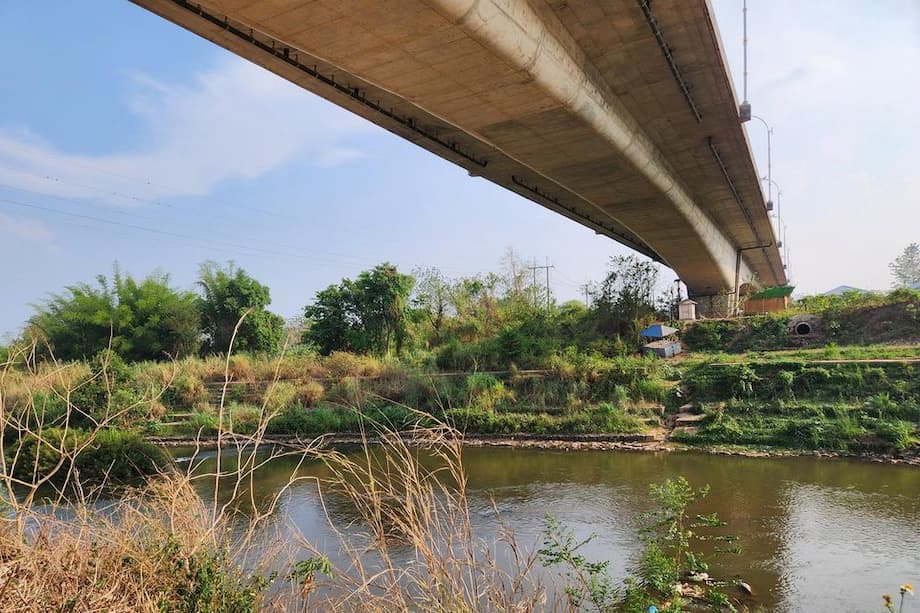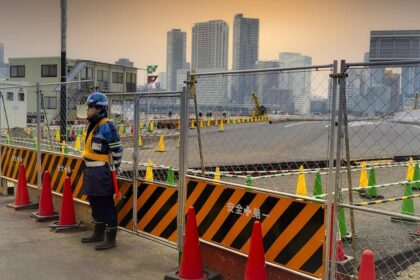Myanmar’s Border Shutdown: A Shockwave for Thai Exports
On August 18, 2025, Myanmar authorities abruptly closed the Second Thai-Myanmar Friendship Bridge at Myawaddy, Kayin State, opposite Thailand’s Mae Sot district. This unexpected move, which halted all large vehicles and commercial goods, sent shockwaves through the bustling border trade that underpins the economies of both nations. The closure, reportedly ordered from Myanmar’s capital Naypyitaw, was part of a sweeping crackdown to seize control of trade revenues and redirect profits from ethnic armed groups to the central government. The impact has been immediate and severe, threatening trade worth an estimated 130 billion baht (approximately US$3.6 billion) and leaving hundreds of trucks stranded at the border.
- Myanmar’s Border Shutdown: A Shockwave for Thai Exports
- Why Did Myanmar Close the Border?
- Immediate Economic Fallout: Thai Exports in Crisis
- How Are Governments and Businesses Responding?
- Wider Regional Impact: Civil War, Checkpoints, and Economic Hardship
- Broader Implications for Thailand and the Region
- In Summary
Why Did Myanmar Close the Border?
The closure is rooted in Myanmar’s ongoing civil conflict and the military junta’s efforts to consolidate power and resources. Since the 2021 coup, Myanmar has been embroiled in a civil war, with ethnic armed organizations and pro-democracy militias controlling significant swathes of territory, including key trade routes. For years, these groups, particularly the Border Guard Force (BGF) in Kayin State, have collected levies and taxes on goods moving across the border, siphoning off revenue that the central government now seeks to reclaim.
According to a spokesperson for Myanmar’s Border Guard Forces, the closure was intended to choke off black market revenues that fund resistance groups. The timing is also politically charged: the junta is preparing for a controversial national election scheduled to begin on December 28, 2025, which critics argue is designed to entrench military rule rather than restore democracy. Junta chief Min Aung Hlaing recently pledged to target opposition fighters who use profits from illegal trade to strengthen their forces, and the border closure is a visible manifestation of that promise.
Political and Security Context
Myanmar’s border with Thailand stretches over 2,400 kilometers and has long been a lifeline for trade, migration, and, increasingly, conflict. The closure of the Second Friendship Bridge is not an isolated event but part of a broader pattern of border disruptions. Many of Myanmar’s other border crossings—with China, India, and Bangladesh—have also been closed or severely restricted due to fighting between the military and ethnic armed groups. The Myawaddy-Mae Sot crossing had remained one of the last major open gateways, making its closure especially disruptive.
Immediate Economic Fallout: Thai Exports in Crisis
The Second Thai-Myanmar Friendship Bridge is the primary conduit for large-scale trade between the two countries. Its closure has brought the flow of goods to a standstill, with official data showing a dramatic slump in exports. Thai exports to Myanmar via this route have plummeted from nearly 50 billion baht per quarter to just over 10 billion baht. Key exports affected include mobile phones and accessories, motorcycles, and palm oil, while imports from Myanmar—dominated by antimony ore and chillies—have also been disrupted.
Business owners and exporters on the Thai side are facing mounting losses. More than 500 cargo trucks have been stranded at Mae Sot, unable to cross into Myanmar. The sudden halt has led to fears of spoilage, increased costs, and potential layoffs. Local economies on both sides of the border, heavily dependent on cross-border trade, are feeling the strain as supply chains unravel.
Official figures from Mae Sot Customs highlight the volatility of the border economy. For the 2025 fiscal year (October 1, 2024, to July 31, 2025), total trade value reached 138.6 billion baht—a 78.94 percent increase from the previous year. However, this growth was driven almost entirely by a 142.34 percent surge in imports (mainly antimony ore), while exports actually fell by 21.34 percent. The closure threatens to reverse even these gains, with the risk of a prolonged slump if the situation is not resolved quickly.
Unofficial Trade and Smuggling: A Hidden Crisis
The border region has long been a hotspot for unofficial trade. Mae Sot Customs estimates that 68.71 percent of imports and 61.85 percent of exports are conducted through unapproved channels. The closure of the main bridge is expected to further disrupt these informal routes, increasing pressure on local traders and potentially driving more activity underground. The junta’s crackdown includes tighter checks on import licenses and increased inspections, which, while aimed at curbing smuggling, may also stifle legitimate commerce.
How Are Governments and Businesses Responding?
The abrupt closure caught Thai authorities off guard. The Tak Chamber of Commerce convened an emergency meeting on the day of the shutdown, urging Thailand’s Ministry of Commerce to negotiate with Myanmar for a swift resolution. Jatuporn Buruspat, Thailand’s Minister of Commerce, confirmed that the Department of Foreign Trade was instructed to meet with Myanmar’s commercial attaché in Thailand to address the backlog of goods and clarify new import license requirements.
From August 20, the Governor of Tak province introduced stricter regulations: exporters must now provide two days’ advance notice for all shipments, which are subject to inspection by military, administrative, and customs officials. While intended to ensure compliance and security, business owners warn that these measures could create further delays and risk damaging perishable goods. There is growing concern that the entire border trade system could grind to a halt if bureaucratic hurdles are not eased.
Alternative Routes and Trade Diversification
Thailand and Myanmar share 21 border points across seven provinces, but the Mae Sot-Myawaddy crossing accounts for nearly 40 percent of total bilateral trade. Other checkpoints, such as Ranong (linked by sea to Myanmar’s Kyaukphyu port), have not yet been affected, but exporters may be forced to reroute shipments if the closure persists. Thai businesses are being encouraged to seek new partners in Myanmar and secure proper import licenses to reduce risks and maintain trade flows.
Wider Regional Impact: Civil War, Checkpoints, and Economic Hardship
The closure of the Second Friendship Bridge is symptomatic of deeper turmoil in Myanmar. Since the 2021 coup, the country has descended into civil war, with ethnic armed organizations and pro-democracy militias controlling large areas, especially along border regions. The military regime’s efforts to reassert control have led to frequent clashes, roadblocks, and the proliferation of checkpoints—both official and unofficial—along major trade routes.
According to reports from The Irrawaddy, the Asian Highway, a key artery for border trade, has remained closed since fighting erupted in Kawkareik, Karen State, in December 2023. Cargo trucks and passenger buses are now forced to use narrow, treacherous mountain roads dotted with up to 48 checkpoints, where various armed groups and regime forces levy tolls. These additional costs, coupled with delays from landslides and surprise inspections, have driven up transportation expenses and led to shortages and price hikes in major cities like Yangon.
One trader from Myawaddy explained,
“Previously, it took two days maximum to get from the border to Yangon. But now it takes one to two weeks. And those additional expenses add up to our selling prices.”
For ordinary citizens, the consequences are stark: bus fares have quadrupled, and the prices of basic goods such as toiletries have soared. The closure of trade routes has also created scarcity of essential imports, including medicine and food, compounding the humanitarian crisis inside Myanmar.
Collapse of Border Trade with China and Other Neighbors
Myanmar’s border trade woes are not limited to Thailand. According to a report by the Institute for Strategy and Policy-Myanmar, overland trade with China has collapsed, with ethnic armed organizations now controlling key crossings that previously accounted for 91 percent of border trade value. Trade with India and Bangladesh has also ground to a halt due to ongoing conflict. The loss of legal trade has fueled a surge in illegal activity, with some estimates suggesting that up to 80 percent of border trade is now conducted outside official channels.
The junta has attempted to open alternative routes and expand air cargo operations, but these are more expensive and less efficient. The resulting shortages and inflation are deepening economic hardship for Myanmar’s population and increasing discontent with the military regime.
Broader Implications for Thailand and the Region
Thailand’s relationship with Myanmar is complex and deeply intertwined. The two countries share not only a long border but also extensive trade, security, and energy ties. Thailand imports about 15 percent of its natural gas and electricity from Myanmar, and Thai businesses have significant investments in Myanmar’s energy, banking, and manufacturing sectors. The border closure threatens these economic interests and raises concerns about energy security, especially if the conflict escalates.
Migration is another major issue. Thailand hosts around 1.8 million registered Myanmar workers, with many more unregistered migrants and refugees fleeing the conflict. The border shutdown could exacerbate humanitarian pressures, strain Thailand’s resources, and complicate efforts to manage cross-border flows.
Thailand’s policy towards Myanmar is further complicated by internal divisions. While the civilian government has sought to engage with opposition groups and support ASEAN-led peace initiatives, the Thai military maintains close ties with Myanmar’s junta. This civil-military split has hindered the formation of a unified response and limited Thailand’s ability to influence developments across the border.
What’s Next? Prospects for Resolution
There is cautious optimism that the border may reopen soon, with some Thai officials anticipating a resumption of trade after intensified inspections and negotiations. However, the underlying drivers of the crisis—Myanmar’s civil war, the junta’s quest for control, and the economic incentives for unofficial trade—remain unresolved. Without a broader political settlement and improved security, the risk of further disruptions persists.
For now, businesses and communities along the Thai-Myanmar border are left in limbo, hoping for a swift resolution but bracing for continued uncertainty. The crisis has exposed the fragility of regional trade networks and underscored the far-reaching consequences of political instability in Myanmar.
In Summary
- Myanmar abruptly closed the Second Thai-Myanmar Friendship Bridge on August 18, 2025, halting large-scale trade with Thailand and stranding hundreds of trucks.
- The closure is part of the junta’s crackdown to seize control of border trade revenues from ethnic armed groups and fund its military operations ahead of a controversial election.
- Thai exports to Myanmar have plummeted, with key sectors and local economies suffering immediate losses.
- Unofficial trade and smuggling, already widespread, are expected to increase as official routes remain blocked and new regulations slow legitimate commerce.
- Both governments are scrambling to resolve the crisis, but deeper issues—civil war, fragmented control, and economic hardship—continue to drive instability.
- The closure highlights the vulnerability of regional trade to political conflict and the urgent need for coordinated solutions to restore stability and economic growth.












